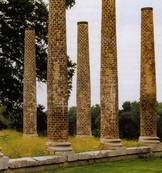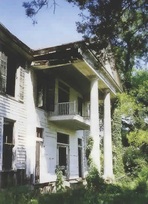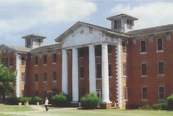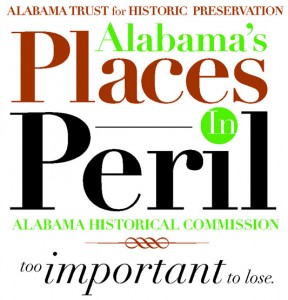 Click image to enlarge.
Click image to enlarge.
 Click image to enlarge. Click image to enlarge. The Forks of Cypress, a mansion named for its location between the forks of Big and Little Cypress creeks, was the only plantation house in Alabama completely surrounded by a classical colonnade. It was also one of the first such houses in North America. Evidence suggests that its architect was the English-born William Nichols, who is credited with both the original University of Alabama campus and the elegant 1827 state capitol in Tuscaloosa.
1 Comment
 Click image to enlarge. Click image to enlarge. Cedar Haven, an imposing Greek Revival dwelling, was built by Philip Weaver, an early settler credited with introducing underground cisterns as a solution to the water-shortage problems that often arose in the long, dry Black Belt summers. Weaver lived in Selma most of the year, using Cedar Haven only during the hot, cotton-growing summer months. Built for the summer climate, Cedar Haven has multiple porches and doors (three to the front portico), allowing the air to flow freely through the house. The interior is plain to the point of austere. Perhaps the most captivating feature of Cedar Haven, however, is the panoramic view from the upstairs balcony of the gently rolling Black Belt countryside. One of the last of the fine Italianate houses to be built in Mobile, the Osborne House is also one of the last of its kind in the city to be restored. Located in a major historic district, the house suffers from years of neglect inside and out. Rain damage and vagrant break-ins continue to cause problems. Much of the interior trim has been stolen or vandalized. Most of the other houses in the historic district have been renovated and serve either as private homes or as office space.
Mount Vernon Arsenal / Searcy Hospital Complex, Mobile County, 1830 (Places in Peril 1995)10/23/1995  Click image to enlarge. (Courtesy Devereaux Bemis) Click image to enlarge. (Courtesy Devereaux Bemis) Placed on the National Register of Historic Places in 1988, Searcy Hospital sits on one of the most historic sites in the state. First developed by the U.S. Government in 1830, Mount Vernon Arsenal became a primary military supply facility for Alabama and West Florida. Captured by Confederate sympathizers during the Civil War, the site was returned to the federal government in 1865 and served as a garrison for occupying forces during Reconstruction. During the late nineteenth century, the arsenal housed several hundred Apache prisoners of war (1887-1894), including the celebrated Chiricahua Apache, Geronimo. |
Alabama's Endangered Historic LandmarksEach year since 1994, Alabama Heritage has highlighted threatened historic sites throughout Alabama. The “Places in Peril” list has identified more than 215 imperiled historic resources throughout the state, and is compiled by the Alabama Historical Commission and the Alabama Trust for Historic Preservation. The locations highlight the results of deferred maintenance, perceived obsolescence, development pressures, and lack of funding—forces that now more than ever threaten our cultural legacy. But awareness is a powerful force, too, and can cultivate a renewed determination to be responsible stewards of our heritage. For more information, visit the AHC or the ATHP websites. Alabama Heritage is proud to bring to you a selection of the places designated as perilous. Please keep your comments to information relevant to the featured place in peril. Alabama Heritage reserves the right to delete any comment that we deem inappropriate. Archives
May 2024
|

 RSS Feed
RSS Feed